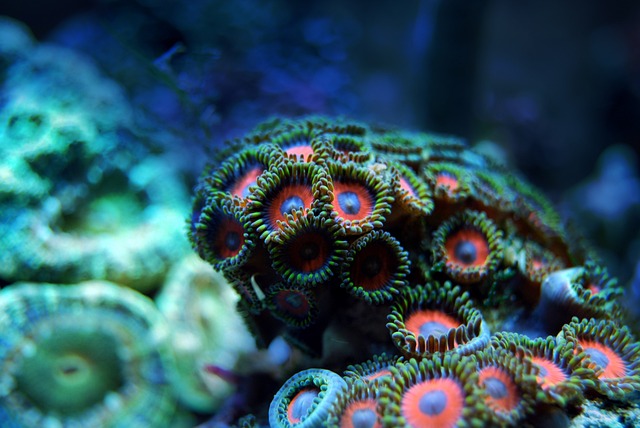Clownfish and anemones have a well-known symbiotic relationship in the ocean. The clownfish live within the anemone’s tentacles, which protect them from predators, while the clownfish provide the anemone with food. However, some may wonder if clownfish can harm or even kill anemones.
Clownfish are not known to harm anemones intentionally, but they have been observed accidentally damaging them while trying to defend their territory.
Clownfish are very protective of their home, and if they feel threatened by another fish or even a diver, they may attack and bite the intruder.
Unfortunately, this can result in the clownfish accidentally biting the anemone, which can cause damage or even death to the anemone.
Can a Clownfish Kill an Anemone?
Clownfish and anemones have a symbiotic relationship, where the clownfish live within the anemone’s tentacles and are protected from predators. However, there are times when a clownfish may harm or even kill an anemone.
Potential Threats
Clownfish are generally not aggressive towards anemones, but there are a few potential threats that can cause harm. One threat is overcrowding, where too many clownfish live in one anemone.
This can cause the anemone to become stressed and eventually die. Another threat is aggressive behavior from the clownfish, such as biting or nipping at the anemone’s tentacles. This can cause damage to the anemone and potentially lead to its death.
Accidental Harm
Sometimes, clownfish can accidentally harm anemones while swimming or playing. For example, if a clownfish accidentally brushes against an anemone’s tentacles, it can cause the anemone to retract its tentacles in defense. If this happens too often, the anemone may become stressed and eventually die.
Natural Causes
Anemones can also die due to natural causes, such as disease or old age. If an anemone is already weakened, it may be more susceptible to harm from the clownfish.
In conclusion, while clownfish generally have a beneficial relationship with anemones, there are potential threats and accidental harm that can cause harm to the anemone. It is important to monitor clownfish behavior and ensure that they are not overcrowding or exhibiting aggressive behavior towards the anemone.
Scientific Studies and Research
Existing Literature
There is a significant amount of literature on the relationship between clownfish and anemones. Several studies have been conducted to understand the behavior of clownfish in the presence of anemones.
According to existing literature, clownfish have a symbiotic relationship with anemones, where they benefit from the protection offered by the anemones while they are provided with food in return.
One study conducted by Fautin and Allen in 1997 found that clownfish are immune to the venom of their host anemones.
The study concluded that clownfish are not affected by the anemone’s nematocysts, which are the stinging cells that anemones use to capture prey. This suggests that clownfish are unlikely to be harmed by their host anemone.
The Clownfish-Anemone Relationship
Clownfish and anemones have a unique relationship that benefits both parties involved. This relationship is known as mutualism, which means both species benefit from each other.
Mutualism
Clownfish are immune to the stinging cells of anemones, allowing them to live among the anemone’s tentacles without harm. In return, the clownfish provide the anemone with food scraps and help to remove parasites from its body.
Protection Mechanism
The anemone provides the clownfish with protection from predators. The anemone’s tentacles contain stinging cells that can paralyze or kill small fish and invertebrates. When predators approach, the clownfish retreats to the safety of the anemone’s tentacles, which provide a natural barrier against predators.
Feeding Habits
Clownfish feed on small invertebrates and algae that grow on the surface of the anemone. They also consume small bits of food that the anemone captures in its tentacles. In return, the clownfish provide the anemone with nutrients in the form of waste and leftover food scraps.
In conclusion, the clownfish-anemone relationship is a unique example of mutualism in the ocean. The clownfish provides the anemone with food and protection, while the anemone provides the clownfish with a safe place to live and food.
This relationship benefits both species and is essential to the ocean’s ecosystem.
Conclusion
In conclusion, while clownfish are known for their symbiotic relationship with anemones, they are not known to kill them. Anemones provide a haven for clownfish, protecting them from predators, while clownfish provide food for the anemone. This mutualistic relationship is beneficial for both parties involved.
While clownfish are known to nip at the tentacles of anemones occasionally, this behavior is not harmful to the anemone. In fact, it has been suggested that this behavior may even stimulate the anemone’s feeding response, leading to increased food intake.
It is important to note that improper care of a clownfish or anemone can lead to stress and illness, which can potentially harm both species. It is recommended to research and properly care for these animals before introducing them to an aquarium.
Overall, the relationship between clownfish and anemones is a fascinating example of symbiosis in the animal kingdom. While clownfish may not be able to kill anemones, they play an important role in the survival and well-being of these beautiful creatures.









